Truman Capote’s Biggest Blunder Is the Subject of ‘Feud: Capote vs. The Swans’
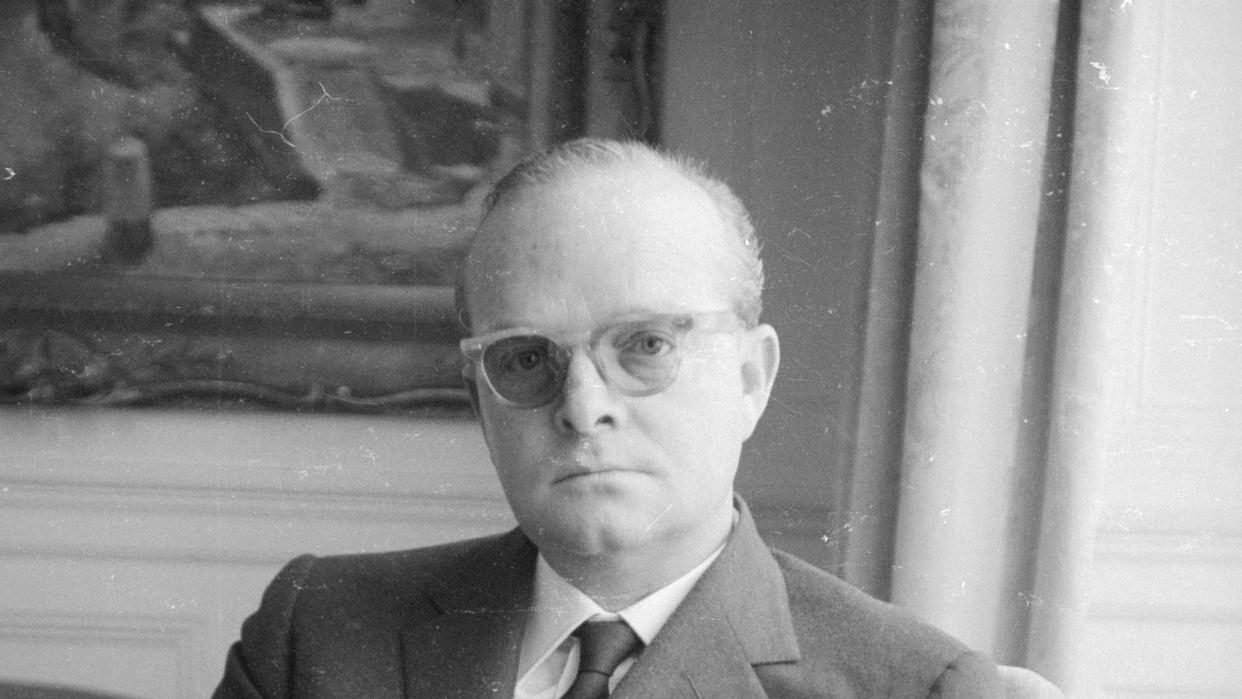
- Oops!Something went wrong.Please try again later.
- Oops!Something went wrong.Please try again later.
- Oops!Something went wrong.Please try again later.
"Hearst Magazines and Yahoo may earn commission or revenue on some items through these links."
1924-1984
Latest News: Limited Series Feud Revisits Truman Capote’s Biggest Blunder
From a young age, writer Truman Capote sought out friendships with New York City’s elite. The In Cold Blood author eventually counted fashion editor Babe Paley, trendsetter Gloria Guinness, and Jacqueline Kennedy’s sister Lee Radziwill among his close connections. But when he aired some of his friends’ secrets in a 1975 Esquire essay, the blowback was fierce. The article was an excerpt from his in-progress novel Answered Prayers, and instead of becoming his defining work, the book became his downfall.
Now, the infamous celebrity scandal is the subject of Feud: Capote vs. The Swans, an FX anthology series from TV producer Ryan Murphy. The show stars Tom Hollander as Capote, alongside actors Demi Moore, Naomi Watts, Diane Lane, Chloë Sevigny, Calista Flockhart, and Molly Ringwald. You can watch the eight-episode limited series on FX and Hulu, beginning January 31.
[table-of-contents] stripped
Who Was Truman Capote?
One of the 20th century’s most well-known authors, Truman Capote wrote Breakfast at Tiffany’s and In Cold Blood. The author was as fascinating a character as those who appeared in his stories. A brilliant yet largely unmotivated student, Capote began pursuing a writing career as a teenager and first found success in the mid-1940s with the publication of several short stories. His 1948 debut novel, Other Voices, Other Rooms, was followed by Breakfast at Tiffany’s and 1966’s In Cold Blood, a pioneering form of narrative nonfiction. Capote pursued celebrity throughout his life, making friends with Gloria Vanderbilt, Jacqueline Kennedy, and Harper Lee, among others. In his later years, he struggled with substance abuse. Capote died in 1984, one month before his 60th birthday.
Quick Facts
FULL NAME: Truman Garcia Capote
BORN: September 30, 1924
DIED: August 25, 1984
BIRTHPLACE: New Orleans, Louisiana
ASTROLOGICAL SIGN: Libra
Early Life
Truman Garcia Capote was born Truman Streckfus Persons on September 30, 1924, in New Orleans. His parents were an odd pair—a small-town woman named Lillie Mae and a charming schemer called Arch—and they largely neglected their son, often leaving him in the care of others. Truman spent much of his young life in the care of his mother’s relatives in Monroeville, Alabama.
In Monroeville, Truman befriended a young Harper Lee. The two were opposites: he was a sensitive boy who was picked on by other kids for being a wimp, while she was a rough and tumble tomboy. Despite their differences, Harper found Truman to be a delight, calling him “a pocket Merlin” for his creative and inventive ways. Little did these playful pals know that they would both become famous writers one day.
Although he had fun with his friends, Truman also had to struggle with his nightmarish family life. Seeing little of his mother and his father over the years, he often wrestled with feeling abandoned by them. One of the few times he caught their interest was during their divorce with each of them fighting for custody as a way to hurt the other. Truman finally did get to live with his mother full time in 1932, but this reunion didn’t turn out as he had hoped. He moved to New York City to live with her and his new stepfather, Joe Capote.
His once-doting mother was quite different once he started to encounter her on a daily basis. Lillie Mae, now calling herself Nina, could easily be cruel or kind to Truman, and he never knew what to expect from her. She often picked on him for his effeminate ways and for not being like other boys. His stepfather seemed to be a more stable personality in the home, but Truman wasn’t interested in his help or support at the time. Still, he was officially adopted by his stepfather, and his name was changed to Truman Garcia Capote in 1935.
A mediocre student, Capote did well in the courses that interested him and paid little attention in those that didn’t. From 1933 to 1936, he attended Manhattan’s Trinity School, a private boys’ school, where he charmed some of his classmates. Capote, an unusual boy, had a gift for telling stories and entertaining people. His mother wanted to make him more masculine and thought that sending him to a military academy would do the trick. At St. John’s Military Academy, the 1936-1937 school year proved to be a disaster for Capote. The smallest in his class, he was often picked on by the other cadets.
Returning to Manhattan, Capote started to attract attention for his work at school. Some of his teachers noted his promise as a writer. In 1939, the Capotes moved to Greenwich, Connecticut, where Truman enrolled at Greenwich High School. He stood out among his classmates with his ebullient personality. Over time, Capote developed a group of friends who often went to his house to smoke, drink, and dance in his room. They also went out to nearby clubs. Seeking adventure as well as an escape, Capote and his good friend Phoebe Pierce visited New York City multiple times and schemed their way into some of the most popular nightspots, including the Stork Club and Café Society.
While the Capotes were living in Greenwich, Nina’s drinking began to escalate, which made Capote’s home life even more unstable. Capote didn’t do well in school and had repeat the 12th grade at The Franklin School (now The Dwight School) after he and his family returned to Manhattan in 1942. Instead of studying, Capote spent his nights at the clubs, making friends with Oona O’Neill, the daughter of playwright Eugene O’Neill and writer Agnes Boulton, and Gloria Vanderbilt, heiress of railroad magnate Cornelius Vanderbilt’s fortune, among others.
Early Career: Short Story Success
While still a teen, Capote got his first job working as a copyboy for The New Yorker magazine. During his time with the publication, Capote tried to get his stories published there with no success. He left The New Yorker to write full-time and started the novel Summer Crossing, which he shelved to work on a novella entitled Other Voices, Other Rooms.
Capote’s first successes weren’t his novels but several short stories. In 1945, editor George Davis selected Capote’s story “Miriam” about a strange little girl for publication in Mademoiselle. In addition to befriending Davis, Capote became close to his assistant Rita Smith, the sister of famous southern author Carson McCullers. She later introduced the two, and Capote and McCullers were friends for a time.
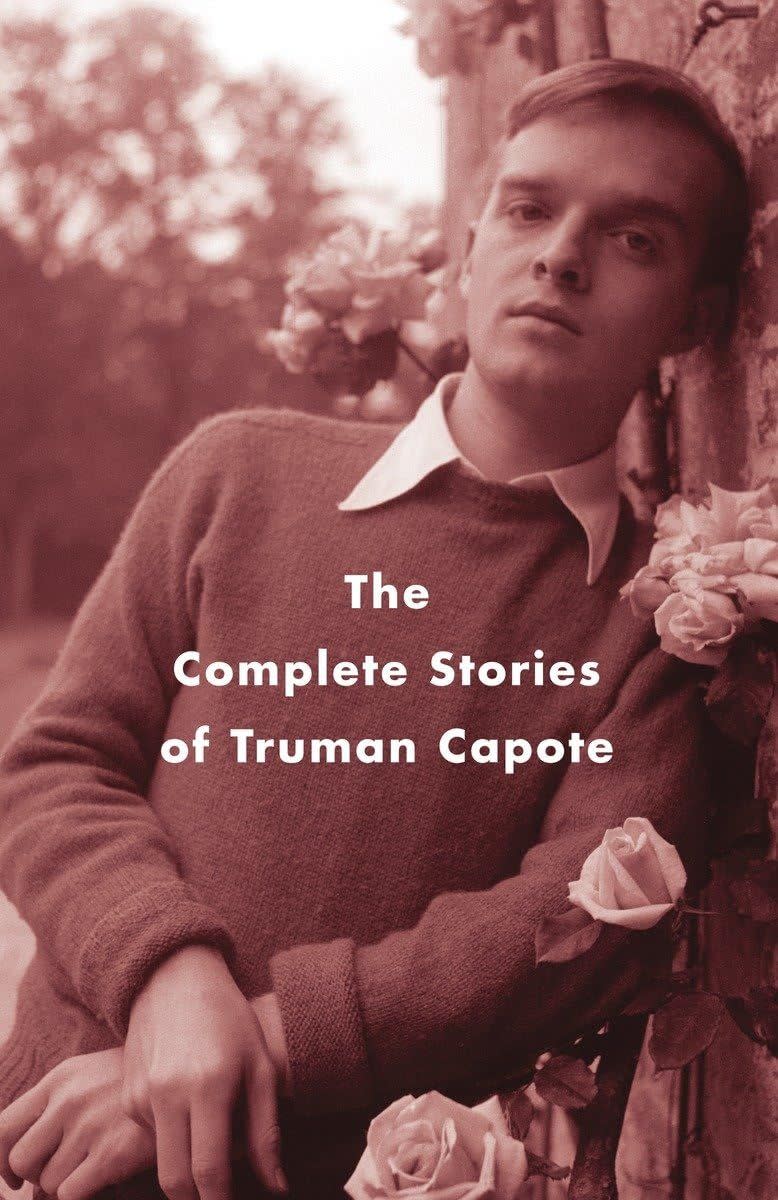
The Complete Stories of Truman Capote
amazon.com
$14.41
Capote’s story in Mademoiselle attracted the attention of Harper’s Bazaar fiction editor Mary Louise Aswell. The publication ran another dark and eerie story by Capote titled “A Tree of Light” in its October 1945 issue. These stories as well as “My Side of the Matter” and “Jug of Silver” helped launch Capote’s career and gave him entrée into the New York literary world.
While struggling to work on his first novel, Capote received some assistance from McCullers. She helped him get accepted at Yaddo, a famous artists’ colony in upstate New York. Capote spent part of the summer of 1946 there, where he did some work on his novel and completed the short story, “The Headless Hawk,” which was published by Mademoiselle that fall.
At Yaddo, Capote fell in love with Newton Arvin, a college professor and literary scholar. The bookish academic and the effervescent charmer made quite an interesting pair. Arvin, as with most of the others at the colony, was completely taken by Capote’s wit, manner, and appearance. That same year, Capote won the prestigious O. Henry Award for his short story “Miriam.”
Books and Screenplay Work
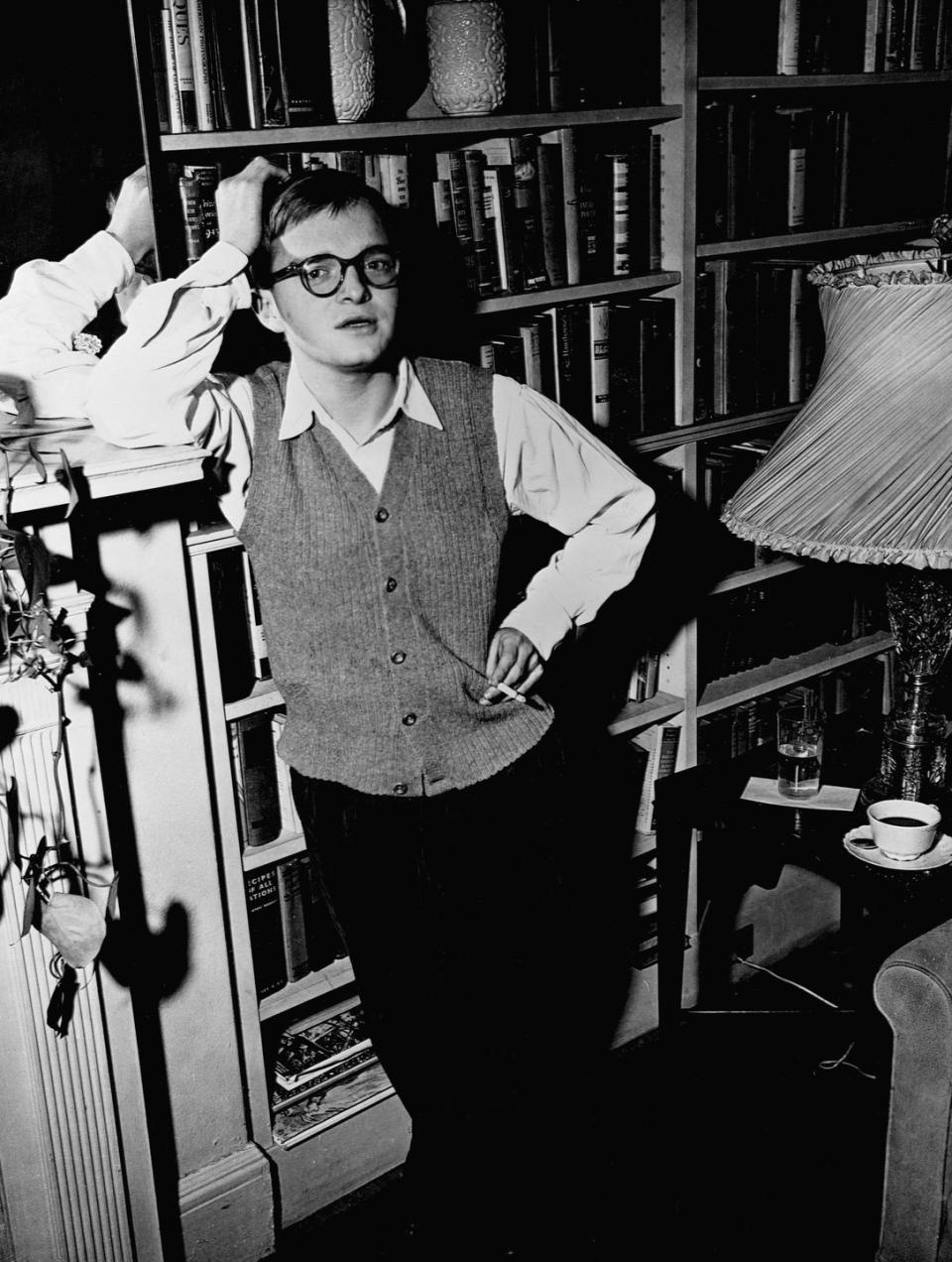
Capote’s first novel, Other Voices, Other Rooms, was published in 1948 to mixed reviews. In the book, a young boy is sent to live with his father after the death of his mother. His father’s home is a decrepit old plantation. For a time, the boy doesn’t get to see his father and instead must deal with his stepmother, her cousin, and some other unusual characters that inhabit this desolate place. While some criticized elements of the story, such as its homosexual theme, many reviewers noted Capote’s talents as a writer. The book sold well, especially for a first-time author.
In addition to receiving accolades and publicity, Capote found love again in 1948. He met author Jack Dunphy at a party that year, and the two began a 35-year relationship. During the early years of their relationship, Capote and Dunphy traveled extensively. They spent time in Europe and other places where they both worked on their own projects.
Capote followed the success of Other Voices, Other Rooms with a collection of short stories, A Tree of Light, published in 1949. Not one to stay out of the public eye for long, his travel essays were put out in book form in 1950 as Local Color. His much-anticipated second novel, The Grass Harp, was released to in the fall of 1951. The fanciful tale explored an unlikely group of characters who take refuge from their troubles in a large tree. At the request of Broadway producer Saint Subber, Capote adapted his novel for the stage. The sets and costumes were designed by Capote’s close friend Cecil Beaton. The comedy opened in March 1952 and ran for 36 performances.
In 1953, Capote landed some movie work. He wrote some of Stazione Termini (later released as Indiscretion of an American Wife in the United States), which starred Jennifer Jones and Montgomery Clift. During the filming in Italy, Capote and Clift developed a friendship. After that project wrapped, Capote was soon working on the script for the John Huston–directed Beat the Devil, starring Jones, Humphrey Bogart, and Gina Lollobrigida, during its production. His best screenplay, however, was done years later when he adapted the Henry James novel The Turn of the Screw into The Innocents (1961).
Undeterred by his past failure, Capote adapted his story about a Haitian bordello, “House of Flowers,” for the stage at Subber’s urging. The musical debuted on Broadway in 1954 with Pearl Bailey as its star and Alvin Ailey and Diahann Carroll in the cast as well. Despite the best efforts of Capote and the performers, the musical failed to attract enough critical and commercial attention. It closed after 165 performances. That same year, Capote suffered a great personal loss when his mother died.
Always fascinated by the rich and social elite, Capote found himself a popular figure in such circles. He counted fashionable trendsetter Gloria Guinness; Babe and Bill Paley, the founder of CBS Television; future First Lady Jackie Kennedy and her sister Lee Radziwill; socialite and author C. Z. Guest; and many others among his friends. Once an outsider, Capote was invited for cruises on their yachts and for stays on their estates. He loved gossip—both hearing and sharing it. In the late 1950s, Capote began discussing a novel based on this jet-set world, calling it Answered Prayers.
In 1958, Capote scored another success with Breakfast at Tiffany’s. The book explored the life of a New York City party girl named Holly Golightly, who depended on men to get by. With his usual style and panache, Capote had created a fascinating character within a well-crafted story. Three years later, the movie version released, starring Audrey Hepburn as Holly. Capote had wanted Marilyn Monroe in the lead role and was disappointed with this adaptation.
In Cold Blood
Capote’s next big project started out as an article for The New Yorker. He set out with friend Harper Lee to write about the impact of the November 1959 murders of four members of the Clutter family on their small Kansas farming community. The two traveled to Kansas to interview townspeople, friends and family of the deceased, and the investigators working to solve the crime. Capote, with his flamboyant personality and style, had a hard time initially getting into his subjects’ good graces. Without using tape recorders, the two wrote up their notes and observations at the end of each day and compare their findings.
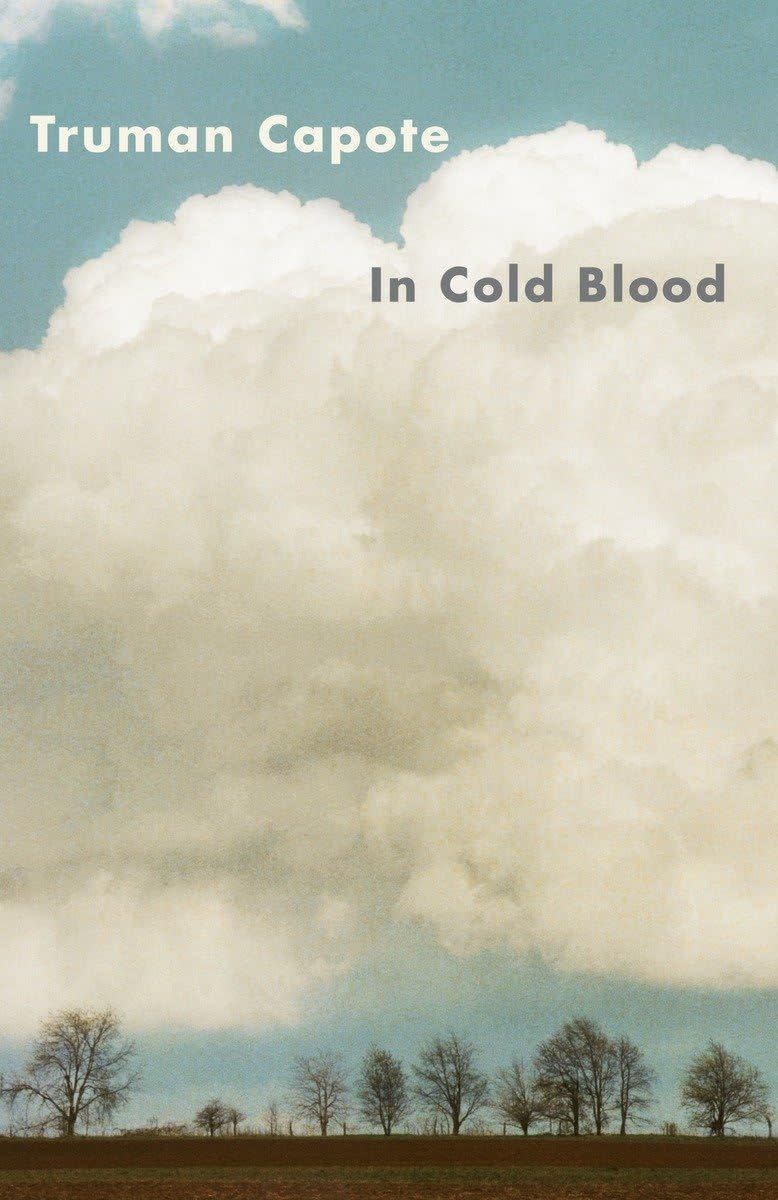
In Cold Blood by Truman Capote
amazon.com
$11.79
During their time in Kansas, the Clutters’ suspected killers, Richard Hickock and Perry Smith, were caught in Las Vegas and brought back to Kansas. Lee and Capote got a chance to interview the suspects not long after their return in January 1960. Soon after, Lee and Capote went back to New York. Capote started working on his article, which evolved into the nonfiction masterpiece In Cold Blood. He also corresponded with the accused killers, pressing them to reveal more about themselves and the crime. In March 1960, Capote and Lee returned to Kansas for the murder trial.
Hickock and Smith were convicted and sentenced to death, but their execution was staved off by a series of appeals. The two hoped Capote would help them escape the hangman’s noose and were upset to hear that the book’s title was In Cold Blood, which indicated that the murders had been premeditated.
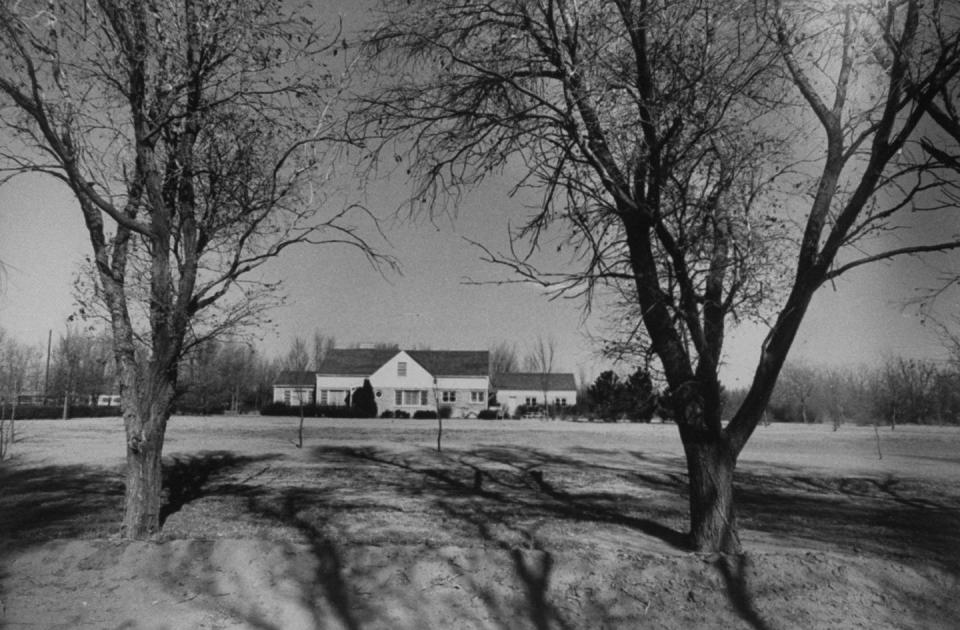
Writing this nonfiction masterwork took a lot out of Capote. For years, he labored on it and still had to wait for the story to find its ending in the legal system. Hickock and Smith were finally executed on April 14, 1965, at the Kansas State Penitentiary. At their request, Capote traveled to Kansas to witness their deaths. He refused to see them the day before, but he visited with both Hickock and Smith shortly before their hangings.
In Cold Blood became a huge hit, both critically and commercially. Capote used a number of techniques usually found in fiction to bring this true story to life for his readers. It was first serialized in The New Yorker across four issues in 1965 with readers anxiously awaiting each gripping installment. When it was published as a book in 1966, In Cold Blood was an instant best-seller. It became a movie, starring Robert Blake and Scott Wilson, in 1967 and later a TV miniseries.
Although In Cold Blood brought him acclaim and wealth, Capote was never the same after the project. Digging into such dark territory had taken a toll on him psychologically and physically. Known to drink, Capote began drinking more and started taking tranquilizers to soothe his frayed nerves. His substance abuse problems escalated over the coming years.
Later Work: Answered Prayers Controversy
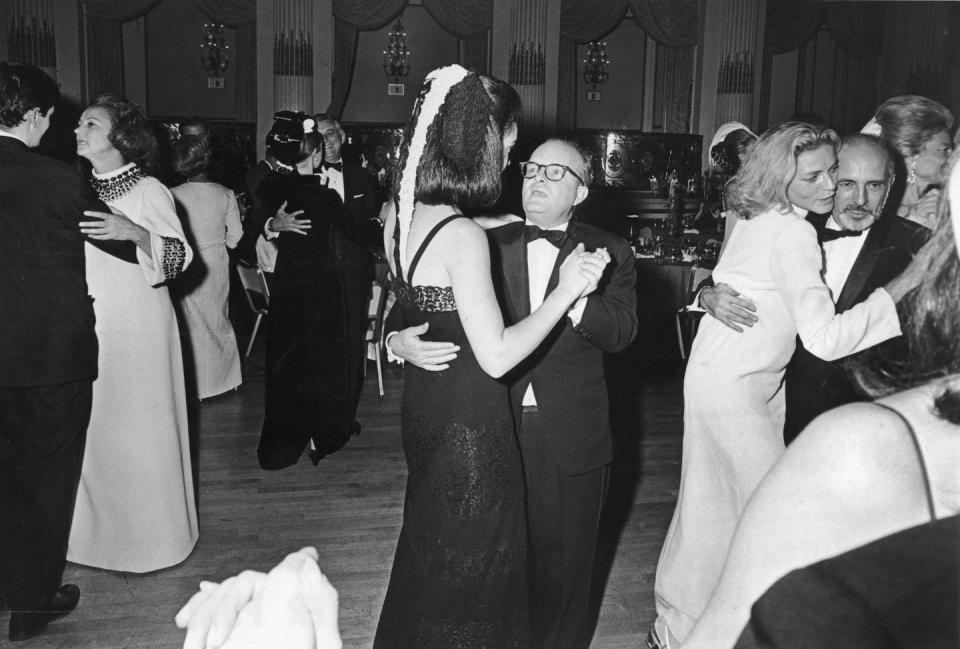
Despite his problems, Capote did manage to pull off one of the biggest social events of the 20th century. Attracting his society friends, literary notables, and stars, his Black and White Ball in 1966 garnered a huge amount of publicity. The event was held in the Grand Ballroom at the Plaza Hotel on November 28 with publisher Katharine Graham as the guest of honor. In choosing a dress code, Capote decided that the men should dress in black tie attire while women could wear either a black or white dress. Everyone had to wear a mask. One of the evening’s more memorable moments was when actor Lauren Bacall danced with director and choreographer Jerome Robbins.
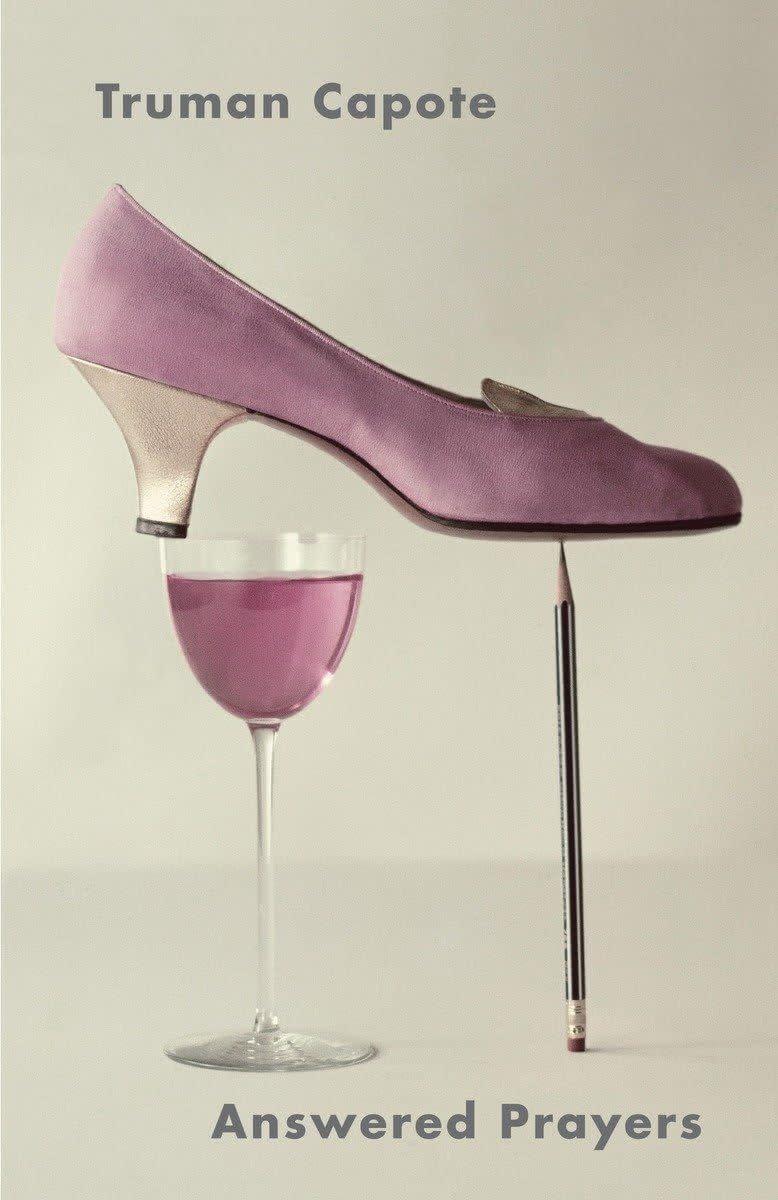
Answered Prayers by Truman Capote
amazon.com
$13.50
Those society friends that flocked to the ball were in for a nasty shock several years later. Considered one of the notorious instances of biting the hand that feeds, Capote had a chapter from his in-progress book Answered Prayers published in Esquire magazine in 1975. That chapter, “La Cote Basque, 1965,” aired a lot of his society friends’ secrets as thinly veiled fiction.
Many of his friends, hurt by his betrayal, turned their back on him. He claimed to be surprised by their reactions and was hurt by their rejection. By the late 1970s, Capote had moved on to the party scene at the famous club Studio 54 where he hung out with the likes of artist Andy Warhol, human rights advocate and actor Bianca Jagger, and actor and singer Liza Minnelli.
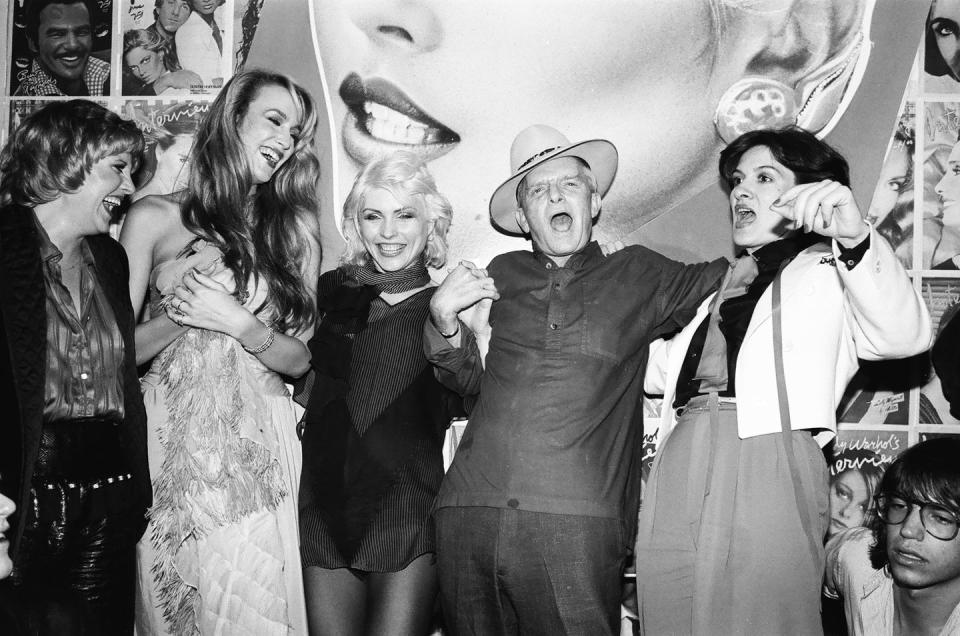
By this time, Capote’s relationship with Jack Dunphy was becoming strained. Dunphy wanted Capote to stop drinking and taking drugs, which he seemed unable to do despite numerous trips to rehabilitation centers over the years. While no longer physically intimate, the two remained close, spending time together at their neighboring homes in Sagaponack, Long Island.
Published in 1980, Capote’s last major work, Music for Chameleons, was a collection of nonfiction and fictional pieces, including the novella Handcarved Coffins. The collection did well, but Capote was clearly in decline, battling his addictions and physical health problems. He never did finish Answered Prayers, though the incomplete book published in 1987, after Capote’s death.
Failing Health and Death
In the final year of his life, Capote had two bad falls, another failed stint in rehab, and a stay in a Long Island hospital for an overdose. Capote traveled to California to stay with old friend Joanne Carson, the ex-wife of Johnny Carson. Capote died at her Los Angeles home on August 25, 1984. He was 59.
After Capote’s death, Joanne received some of her beloved friend’s ashes. When she died in 2015, Capote’s ashes became part of her estate. In what some media observers saw as a fitting end for the headline-grabbing author, his remains were sold at auction in Los Angeles in September 2016. An anonymous buyer paid $43,750 for Capote’s ashes, contained in a wooden Japanese box. “With some celebrities this wouldn’t be tasteful, but I know 100 percent he would love it,” Darren Julien, president of Julien’s Auctions, told The Guardian. “He loved to create press opportunities and to read his name in the paper. I think he would love it that he’s still grabbing headlines today.”
Movies about Truman Capote
Capote’s life has inspired many books, several movies, and a TV show. After writing a magazine profile of the author, journalist Gerald Clarke spent years interviewing Capote and his friends for Capote: A Biography. The book, released four years after Capote’s death in 1988, became a best-seller and was the basis for the 2005 movie Capote. Star Philip Seymour Hoffman won an Academy Award for his performance in the biopic.
Other books about Capote include Clark’s Too Brief a Treat: The Letters of Truman Capote (2004), Party of the Century: The Fabulous Story of Truman Capote and His Black and White Ball (2006) by Deborah Davis, and Capote’s Women (2012) by Laurence Leamer.
Onscreen, Capote was also the focus of the 2006 movie Infamous, starring Toby Jones as the author, and the 2021 documentary The Capote Tapes. The 2024 limited series Feud: Capote vs. The Swans, featuring actor Tom Hollander, dramatizes Capote’s infamous falling out with his New York City society friends. The show is based on the book Capote’s Women.
Quotes
I don’t care what anybody says about me as long as it isn’t true.
To me the greatest pleasure of writing is not what it is about but the inner music that words make.
My major regret in life is that my childhood was unnecessarily lonely.
Writing has laws of perspective, of light and shade, just as a painting does, or music. If you are born knowing them, fine. If not, learn them. Then rearrange the rules to suit yourself.
Life is a moderately good play with a badly written third act.
Fact Check: We strive for accuracy and fairness. If you see something that doesn’t look right, contact us!
You Might Also Like

